What happens when Acton learners don’t live up to their own commitments? Elementary learners practice a special tool for self-governance in the studio: an apology.
As a consequence for an incident of misrepresented work (a violation of their contract), two learners were given the choice: deliver an “excellent” apology, as judged by their peers, or forfeit the coveted “scholars’ choice” free time on Friday.
What makes an excellent apology? The learners were given a rubric of three factors: sincerity “be honest and genuine”; responsibility “take responsibility and don’t shift blame to others”; and commitment “promise to do better and commit to uphold the contract moving forward.” Peers rated each apology on a scale of 1 to 3 scale for each factor. Learners would need to earn a total of 24 points (an average 8 out 9 from each learner) to earn back their scholars’ choice time — a very high bar.
On the first try, one learner received a 18.5 apology and the other received a 20.5. Not enough! Do you want to try again? Yes.
So the learners coached each other, offering “warm, cool, warm” feedback for how they could do better. One learner suggested, “You’ve got to be honest and clean about exactly what happened.” Another learner suggested they be more specific on their commitment, “Which provision of the contract will you do better on?”
After a 5 minute hundle to practice, the learners tried again… and this time, they earned 25.5 and 24.5, improving by 7 and 4 points respectively! Everyone enjoyed a well-earned afternoon of scholars’ choice.
In contrast to the political non-apology apology — here in the heart of the town that invented it — it’s nice to see Acton learners hold themselves to a higher bar for an “honest and clean” apology.
David Kirby
Recent Posts
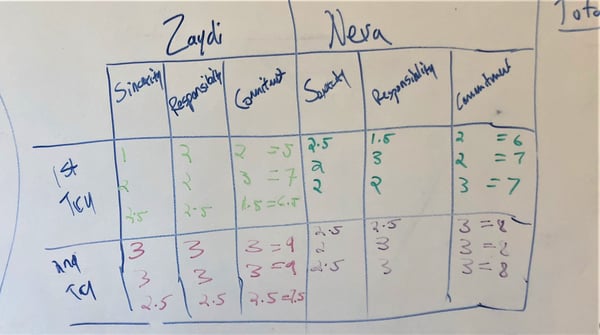
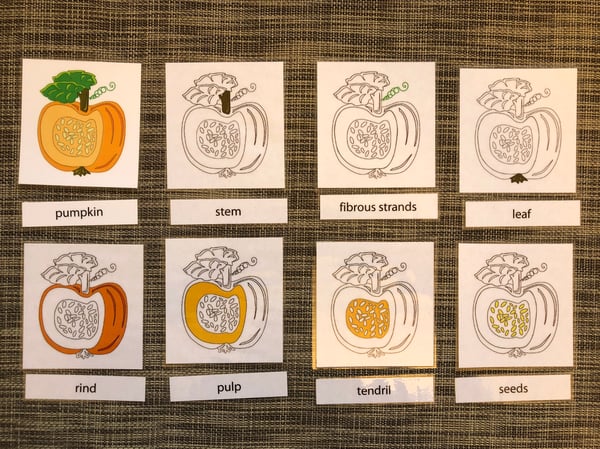
Montessori learners have been exploring the science of things around us. Where does something come from? How did it get here? Why does it look like that?
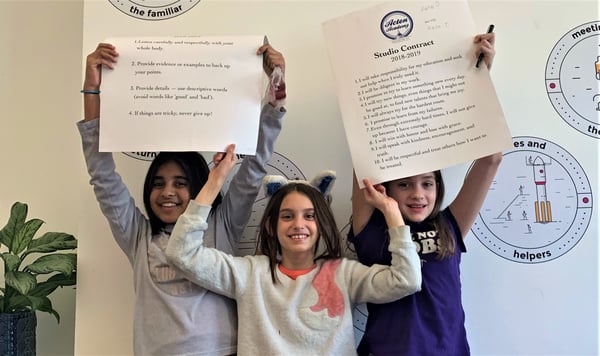
The hero’s journey is a metaphor that we reference often in the elementary studio. It is the foundation of “learning to be.” When we talk about growth mindset, character traits, flow, and focus, we discuss these philosophical concepts in relation to each learner’s unique hero’s journey.
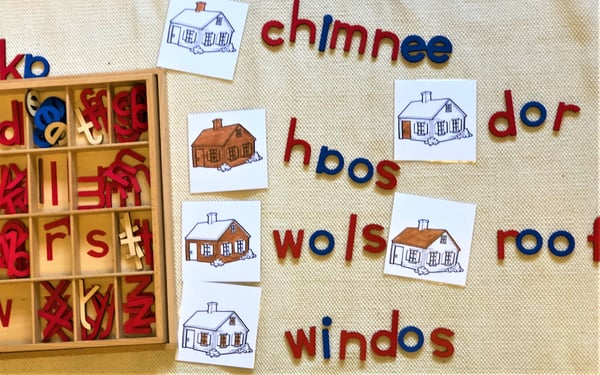
In the Montessori studio, we explore different types of homes and houses found around the world. We start by defining a house, and after eliminating all the living creatures that do not live in houses (bats, squirrels, hammerhead sharks, and ladybugs, just to name a few), we concluded it is a place where humans live.
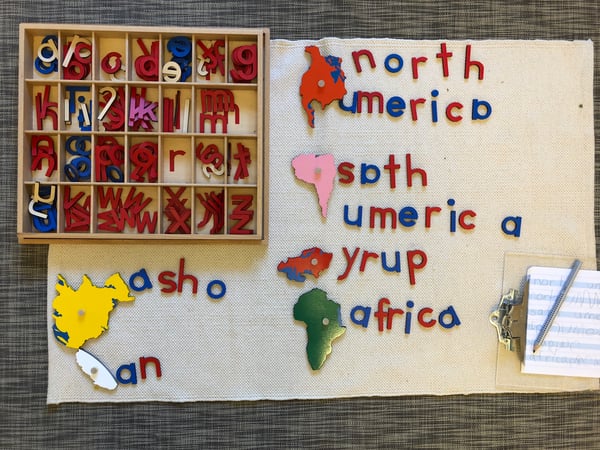
The Montessori studio houses all sorts of different projects and activities. One of our recent editions is a puzzle map of the world! Learners enjoy expanding their knowledge of the world we live in. Here is a fun example: A guide asked one of the learners where she went trick-or-treating, and she responded, “North America, and some in Australia.”
In Montessori, we start building geographical awareness by introducing our beautifully painted globe. We identify all the blue as water (oceans) and all the colored, raised parts as land (continents). With our new map of the world, we talk about how it represents the same forms on our globe, but it is as if the sphere has been cut into two halves and flattened. We share observations about the continents: Asia is the biggest continent; North America is touching South America; Australia is far away from North America. Finally, we learn songs about the continents to sing together!
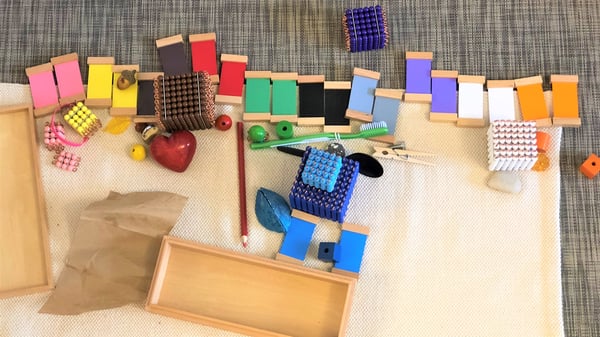
Early Morning
Every morning begins with each child taking time to build self-care skills, such as putting on and taking off their shoes independently, zipping and unzipping their own jacket, and meeting their own human needs (using the bathroom, preparing food for a hungry belly, or pouring a glass of water to quench a thirst).
Group Gathering
Some days we start our morning by gathering together to read a book or have a group lesson. The group lessons are usually centered around the cultural unit we are studying. For example, we might introduce new language classification cards, such as the parts of an apple. Then we would dissect an apple to examine each part: What does the skin feel like? What does the pulp taste like? What are seeds for?
Independent Work and Lessons
The uninterrupted morning work cycle is one of the pillars of a successful, authentic Montessori environment. After our group gathering, the children engage in independent work, choosing among the materials/activities they’ve had a lesson on. Over the course of the morning, the guide gives children one-on-one lessons or offers them extensions of previously explored materials. This might be looking at quantity (counting) and then matching the quantity to the symbol (number), matching shapes from a distance, discovering which objects sink in water and which float, matching items from the studio to the color tablets, or learning to isolate sounds and connect them to their corresponding letters (movable alphabet). During the morning work cycle, learners have snack when they see the snack table is available and they have completed and put back whatever activity they were previously doing. They serve themselves and clean up independently.
Outside
We wind down our morning by singing a song and perhaps reading a book before changing shoes, using the bathroom, and then heading outdoors.
Lunch
After putting on their indoor shoes and washing their hands, the children set up the studio for lunch. They work together to move the tables and chairs. Then the children lay out their placemats and collect their lunchboxes. Once everyone is settled, we recite a poem together before we begin eating. Guides might offer a few suggestions for what they could talk about with their lunch partner, such as, What is your favorite activity to do outside? Share a time when you saw something you had never seen before.
Afternoon: Napping, Baking, Outside Activities
After lunch, we transition into nap time for younger learners and the afternoon work cycle for older learners. Sometimes the older learners prepare afternoon snack for everyone. They might make muffins, zucchini bread, or pizza, all from scratch. When the nappers awake, all the children enjoy an afternoon snack together. After snack, we head outside for play and arts and crafts. If poor weather conditions prevent us from being outside for long periods of time, we do similar activities inside.
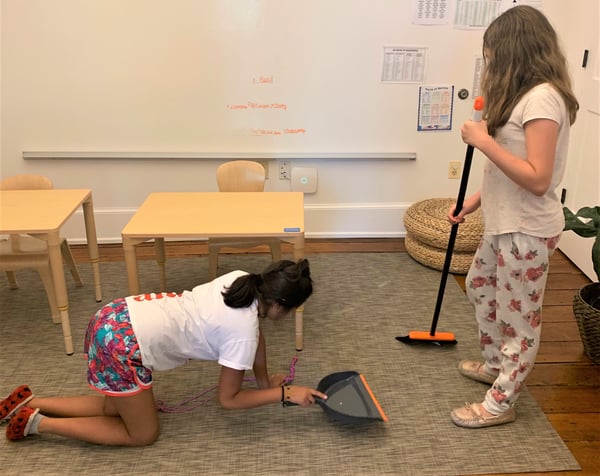
One of our beliefs in the elementary studio is that the studio space is sacred. In a literal way, we uphold this belief through the process of studio maintenance, held each day from 3pm to 3:15pm. The learners are responsible for leaving the studio as tidy as they found it.

The Acton children love to bake! One of their favorites is bread from scratch. Add spring onions and sesame seeds to give a fresh twist and let your child knead the dough flat for some extra fine motor activity at home.
Ingredients
- 4 cups flour
- 2 teaspoon sugar
- 2 teaspoons dried instant yeast
- 1 cup water, lukewarm
- 1 tablespoon vegetable oil
- 1 - 2 stalks spring onions, finely chopped
- 1 tablespoon sesame seeds
- ⅛ teaspoon salt
DRIED APRICOT & OAT BARS
Acton learners have enjoyed coconut oat bars all winter, and this recipe adds our spring friend, the apricot, with its sweet and subtle saffron color!
Ingredients
- 2-3 apricots, cut into small pieces
- 1 2/3 cup of all purpose flour
- 1 2/3 cup of rolled oats
- 1 cup of packed brown sugar
- 12 tablespoons of butter, cold and cut into small cubes
- 1/2 teaspoon of salt
- 1/4 teaspoon of baking soda
FRUIT SALAD
With all the delicious fruits in season now, a fruit salad is an enjoyable snack for the children. Start by collecting assorted fruits of choice (cantaloupe, watermelon, apples, kiwis, etc). Cut larger fruits into smaller pieces or peel a fruit for your child who can then use cookie cutters to make fun shapes for their fruit salad. Once you have the fruits all cut up, place them into a bowl. Squeeze lemon juice and rip up a few fresh mint leaves before diving in!
Other enjoyable kitchen activities that your child can help with:
- Setting the table! We love placemats like this one to get young ones started or you can print a simple template like this
- Grating, chopping, or juicing fruits and/or vegetables at lunch or dinner times
- Loading & unloading the dishwasher or, better yet, washing the dishes
- Preparing a snack for themselves or a sibling
- Emerging readers can assist in reading a recipe!
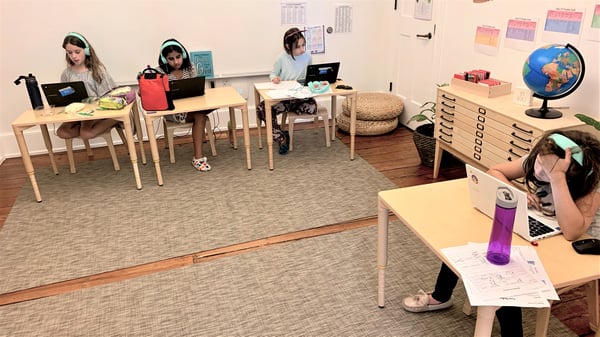
What is a question you’ve pondered that doesn’t have an easy answer or doesn’t have an answer at all? One elementary learner has wondered, “Where did it all start?” What existed before the Big Bang? Another learner has asked, “Is there any alien life? And if there is, why haven’t we found it?”
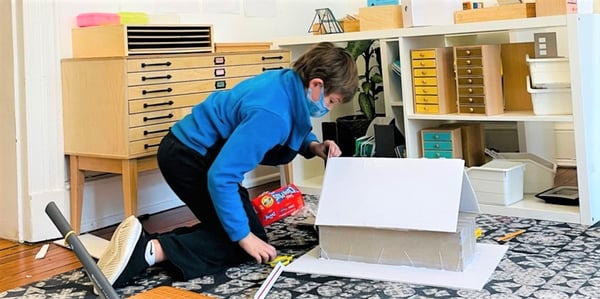
Every session, learners vote to choose which work by their peers will be showcased at the exhibition as an example of the hard work put in by each member of the studio during the session. This session, there was a lot of excitement about the Architecture Quest and Podcasts Writer’s Workshop, and there were more submissions for consideration than ever before!
Showing your work to your peers can be intimidating and requires bravery. The elementary learners are well-versed in giving and receiving feedback and approach these situations with confidence. For this exhibition, learners could submit any part of their work in the Architecture Quest—floor plan, elevation sketch, or final model—for voting. Every learner submitted at least one part of their work, and they all evaluated their fellow studiomates’ projects using this sheet as a guide.
Typically when the learners vote on Writer’s Workshop projects to highlight in the exhibition, they read each work in its entirety first. Because there were so many submissions this session, instead of listening to each submitted podcast all the way through, learners listened to two-minute samples instead. They then cast a blind vote, and the top three most-voted podcasts were played during the exhibition.
Systems for voting are a key part of the elementary studio environment. Learners take voting seriously and use it to uphold standards of excellence in the studio. The learners value fairness and hard work, and voting gives them the opportunity to honor fairness and recognize hard work at the end of each session.